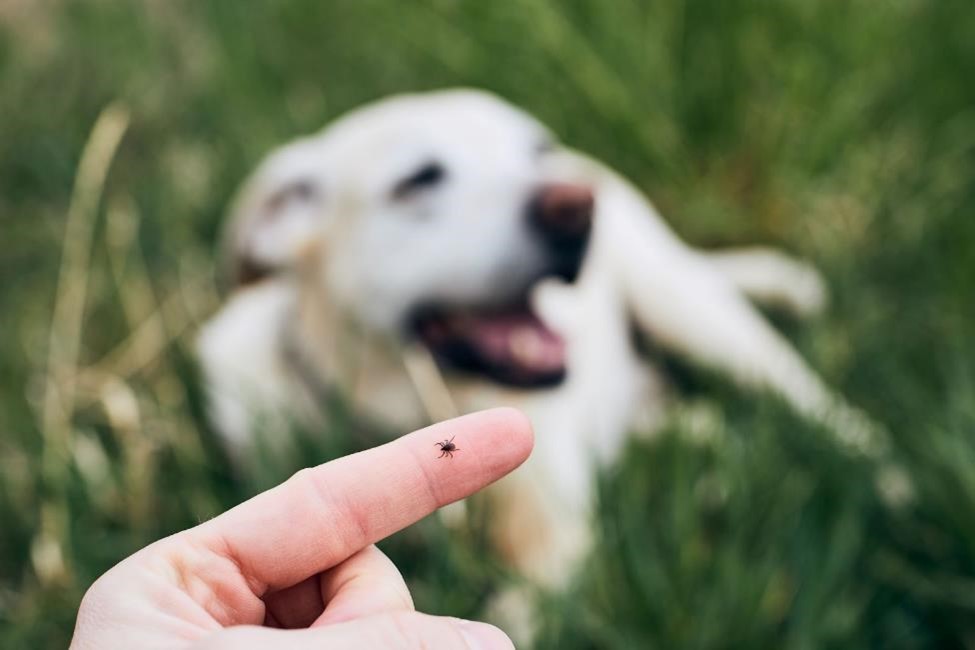Ticks, well known for carrying disease, are found all over the United States. But here in Florida, ticks thrive all year long in our warm, humid weather, which means you have to be constantly vigilant to make sure they don’t latch onto you, your family, or your pets.
But ticks, thankfully, don’t have wings and can’t jump. So how is it that they manage to find their way to your scalp? The answer is through hosts, often wildlife.
Most ticks lie in wait on grasses and shrubs, a process called “questing.” They hold onto leaves and grass with their back legs while their front legs are outstretched, ready to grab onto a new host when one brushes past. And by the time that wildlife pays your home a visit in search of food or shelter, the tick may be ready to drop and start looking for another host again.
Common Wildlife in Florida
Florida is one of the most biodiverse places in all of the United States. While this means we get to see some of the widest varieties of plants and animals, it also means we have a longer list of critters that may cause you problems in your home.
In Florida, Critter Control most often deals with:
However, that’s not all that we’ve encountered, and that’s not an extensive list of what animals can carry ticks onto your lawn.
Ticks can even be found on animals you’re delighted to see, such as birds. Therefore, even if you’re not a fan of hiking and don’t hit the trails very often, you should still be on the lookout for ticks and should be taking the necessary precautions to keep them off of you and your family.

Ticks Found in Florida
Being such a biodiverse part of the United States, Florida fosters not only a great number of plants and animals, but bugs, too. Ticks, being eight-legged, are officially classified as arachnids, and Florida is home to many different species.
American Dog Tick
The American dog tick is commonly found east of the Rocky Mountains, making it one of many Floridian inhabitants and is the most common of all ticks. Also known as the wood tick, this species feeds on mice and birds when young. Meanwhile, adult wood ticks target humans, dogs, and other larger mammals.
Unfed, they are reddish-brown in color, and females have a large silver-colored spot behind their heads. They favor more open environments, such as forest edges with light or no tree cover, or grassy fields, making your lawn an ideal habitat for this species.
These ticks carry a few specific diseases, such as Rocky Mountain spotted fever, tularemia, and ehrlichiosis. Even though not every tick carries a disease, and not every diseased tick will transmit this infection to its host, anyone who experiences illness with a fever or an onset of symptoms in the weeks following a tick bite should contact his or her physician.
Gulf Coast Tick
Named for its limited habitat that primarily covers that of the Atlantic Coast and the Gulf of Mexico, the Gulf Coast tick is another species that favors prairie grass meadows and light overhead coverage. Their appearance ranges from a dark bluish-gray to a dull shade of white, and adults target larger hosts, such as humans, deer, and livestock.
These ticks are highly prolific, with females that lay over 8,000 eggs. The most common disease transmitted by this species is Rickettsia parkeri, very similar to Rocky Mountain spotted fever, with similar signs and symptoms such as a fever, headache, and rash.
Blacklegged Tick
The blacklegged tick, commonly referred to as the deer tick, is a carrier of Lyme disease, babesiosis, and ehrlichiosis. This species is dark brown or black in color and is commonly found across the entire eastern United States.
They live primarily in wooded, brushy areas, where food and overhead coverage are provided. They also prefer higher levels of humidity. They’re not as commonly found in open areas like residential yards, but if you live in a more densely forested area, one may be more likely to find its way to your home.
Lone Star Tick
The lone star tick is a more aggressive species of tick of the southeastern and eastern areas of the United States, distinguished by the female’s white dot on her back, which gives the lone star tick its name. They’re primarily found in dense undergrowth and around wildlife resting areas.
Once they’ve hitched a ride on a host, these ticks crawl so fast and are so small that they’re incredibly hard to notice. Their bites can transmit ehrlichiosis, Rocky Mountain spotted fever, and Southern Tick-Associated Rash Illness (STARI) borreliosis.
Bites from these ticks are also associated with developing a red meat (alpha-gal) allergy. The allergy is acquired through the tick’s saliva that is injected into the individual’s skin during the tick’s feeding. There is no known cure for the allergy.
Removing Ticks and Protecting Yourself and Your Family
Fortunately, most tick-borne diseases are only transmitted after the tick has been attached for more than 24 hours. This means that thorough self-examination and prompt removal of any discovered ticks are key to preventing the spread of these diseases.
However, proper removal is key. When removing an embedded tick, you need clean, fine-tipped tweezers and rubbing alcohol or soap and warm water. Using the tweezers, grasp the tick as close to the skin’s surface as possible, then pull upward with steady, even pressure. It’s important to remove the head and not leave it embedded in the skin. Once removed, cleanse the area with rubbing alcohol or soap and water. Do not crush the tick, either during or after removal. This could cause the tick to regurgitate any infected stomach contents back into the wound or onto your skin, where it could find a small cut or lesion. Once the tick has been removed, dispose of it by putting it in alcohol, into a sealed bag or container, wrapping it tightly in tape, or flushing it down the toilet.

Removing and Keeping Wildlife Away From Your Florida Home With Critter Control
When it comes to ticks, the best method for avoiding them is prevention. You don’t want ticks anywhere near you, your family, or your pets. With such little legs and no wings, it’s more likely that they’ll ride toward your home on the back of a wildlife host instead of crawling there themselves, meaning that keeping wildlife out is the best way to maintain a tick-free home.
Critter Control of Greater Tampa serves the Tampa Bay metro area along with all neighborhoods in Pasco, Hillsborough and Pinellas Counties, and our team is experienced with a wide variety of wildlife pests. Whichever wildlife pest is causing you stress and potentially delivering diseased ticks close to your home, our teams know how to handle it. Call today for a fast and free phone estimate!






